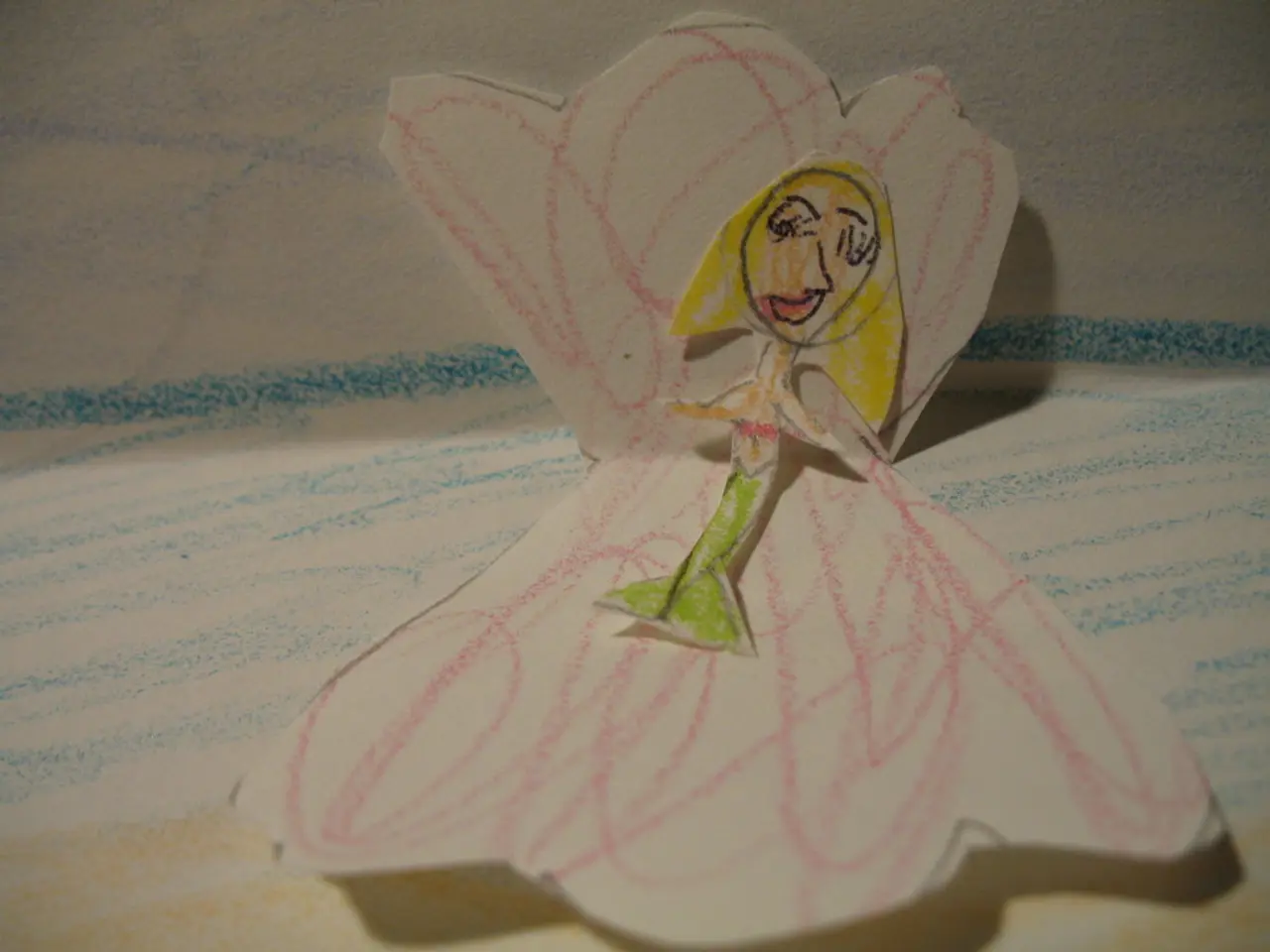Artistic conundrum: Is artificial intelligence an inspiration or a threat to our creative realm?
===========================================================================================
The animation industry is experiencing a significant shift, with the integration of generative AI technology becoming increasingly prevalent. This transformation encompasses various aspects, including job displacement, copyright concerns, and creative dilemmas.
Job Displacement and Role Shifts
One of the most discussed impacts of generative AI is its potential effect on the workforce. According to The Animation Guild, up to 118,500 animation jobs could be affected in the next three years, as AI automates repetitive tasks such as in-betweening, rigging, and rendering optimization [1]. While some fear that AI might outright replace jobs, industry leaders like Pixar’s Pete Docter argue that AI won't fully replace animators because the creative sensibilities, timing, and emotional performance remain uniquely human and essential [1].
In the African animation industry, AI lowers production costs dramatically, enabling small teams to produce features that once required large budgets [4]. This disruption of traditional job structures can be seen as both a challenge and an opportunity, as it opens up new possibilities for storytelling.
Copyright Concerns
AI-generated content raises complex copyright dilemmas, such as ownership of AI-created works, use of copyrighted material for AI training, and potential infringement risks [2]. In animation, where original artistic creation and intellectual property are key, these concerns become pronounced as AI tools generate or transform visual content. Maintaining human creative input is often viewed as necessary to safeguard originality and copyright compliance.
Disney and Universal have recently sued Midjourney for alleged copyright infringement, calling its AI-powered image generator a "bottomless pit of plagiarism" for its alleged development of the studios' best-known characters [3]. This highlights the need for clear regulations and policies regarding the use of generative AI in the animation industry.
Creative Dilemmas
AI can help animators focus more on creative aspects by offloading tedious tasks, potentially enhancing artistic freedom and innovation [1]. However, some fear that AI-driven work might become "bland" or "soulless," lacking the nuance, emotional depth, and cultural sensitivity that human creators provide [2]. The balance between AI assistance and human creativity is a key dilemma: leveraging AI for efficiency while preserving the unique human touch that resonates culturally and emotionally with audiences [2].
Embracing AI: Opportunities and Challenges
Some view AI as a constructive tool, assisting artists in realizing their vision. Cathal Gaffney, managing director of Dublin-based Brown Bag Films, describes AI as "a productive and creative tool to assist artists" [5]. Generative AI plays an important role in turbocharging speed and efficiency, reducing dependence on manual tasks and delivering cost savings [6].
K&K Design, an anime production studio, has embarked on the journey to integrate AI in anime, aiming to reduce time and manual efforts [7]. The animation industry is experiencing a paradigm shift due to the integration of generative AI, with AI tools like Ebsynth automating the process of creating in-between frames [2].
However, there are concerns over originality and diversity becoming obsolete in the animation industry, with homogenization gaining ground [8]. The International Animation Unions have staged a protest at the Annecy Animation Festival against the potential use of generative AI in the field of animation [9]. There is a need for uniform AI regulation-based policy to address ethical and legal issues in the integration of AI [10].
In conclusion, the integration of generative AI in the animation industry presents both opportunities and challenges. While it promises gains in speed, quality, and cost-effectiveness, it raises concerns about workforce changes, ownership of creative output, and preserving human artistic essence. The consensus among industry voices is that AI will augment rather than replace human creators, with ongoing challenges in ethical use and maintaining creative integrity [1][2][3][4]. As such, it is crucial for artists to learn digital, particularly AI skills, to strengthen their position in the industry.
References
[1] The Animation Guild. (n.d.). Generative AI and the Future of Jobs in Animation. Retrieved from https://www.theanimationguild.com/generative-ai-future-jobs-animation/
[2] The Artificial Intelligence (AI) Moment in Animation. (2022, March 28). Retrieved from https://www.cnn.com/2022/03/28/business/ai-animation-industry-impact/index.html
[3] Disney and Universal sue AI firm over copyright infringement. (2022, September 21). Retrieved from https://www.bbc.com/news/technology-62649958
[4] African Animation: The Impact of AI. (2021, October 20). Retrieved from https://www.africanews.com/2021/10/20/african-animation-the-impact-of-ai/
[5] Cathal Gaffney: AI is a creative tool to assist artists in realizing their vision. (2021, October 26). Retrieved from https://www.animationworldnetwork.com/news/cathal-gaffney-ai-is-a-creative-tool-to-assist-artists-in-realizing-their-vision/
[6] Generative AI: A Productive and Creative Tool for Animation. (2022, May 10). Retrieved from https://www.animationworldnetwork.com/news/generative-ai-a-productive-and-creative-tool-for-animation/
[7] K&K Design Embraces AI for Anime Production. (2021, July 28). Retrieved from https://www.animagination.jp/en/news/kkdesign-embraces-ai-for-anime-production/
[8] Originality and Diversity: A Dwindling Phenomenon in the Animation Industry. (2021, June 15). Retrieved from https://www.animationworldnetwork.com/news/originality-and-diversity-a-dwindling-phenomenon-in-the-animation-industry/
[9] The International Animation Unions Protest Against Generative AI. (2022, June 14). Retrieved from https://www.animationworldnetwork.com/news/the-international-animation-unions-protest-against-generative-ai/
[10] The Need for AI Regulation in the Animation Industry. (2022, July 26). Retrieved from https://www.animationworldnetwork.com/news/the-need-for-ai-regulation-in-the-animation-industry/
Worldwide, the animation industry is undergoing transformation with the increasing integration of artificial intelligence (AI) technology. This shift impacts various national economies and job markets, as AI streamlines tasks like in-betweening, rigging, and rendering optimization, potentially leading to significant job displacement (The Animation Guild, 2022).
The imminent rise of AI in the entertainment industry could fosters opportunities for cross-industry collaboration between AI and human creators. For instance, in the realm of artificial-intelligence art, the human touch can still play a crucial role in adding emotional depth and cultural sensitivity, complementing AI capabilities (The Artificial Intelligence (AI) Moment in Animation, 2022).
Moreover, US companies like Pixar are leveraging AI to bolster their creative processes, viewing it as a tool to help artists realize their vision rather than a threat to traditional job structures (Cathal Gaffney: AI is a creative tool to assist artists in realizing their vision, 2021). Hence, technology can serve to augment rather than replace human creators in the global entertainment industry, given the essential role of human artistic input in safeguarding originality and copyright compliance.




